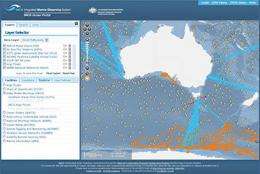Probing deeper into oceans requires help from high tech equipment

Australian scientists are preparing to use the data from a new $22m array of high-tech equipment to help them probe deeper into the nation’s surrounding oceans.
The new technology is part of a vastly improved set of tools provided by the Australian Integrated Marine Observing System (IMOS) to study the open ocean.
"What is happening in the open ocean is vitally important to all Australians and their understanding of local and regional climate," says IMOS Director, Tim Moltmann. "It drives our climate and weather extremes, is the workplace for offshore industries and maritime defence activities and contains a diversity of marine life that currently is barely described.
"We need to observe this part of the earth system to understand how it’s changing, and what the impacts might be on current and future generations of Australians."
Carrying out research in harsh, remote regions of the planet is extremely challenging, and technology plays an increasingly important role.
The open ocean observing array will include:
- Autonomous profiling floats that ‘sense’ breaks in the sea ice to transmit their data.
- Marine mammals equipped with satellite tags.
- Underwater gliders that spend months at sea, controlled by land-based ‘pilots’.
- Huge moorings engineered to withstand some of the wildest ocean conditions.
A feature is continued collaboration with northern hemisphere partners, including the United States, France, the United Kingdom, and Korea.
CSIRO oceanographer and leader of the IMOS ocean and climate node, Dr. Susan Wijffels, says IMOS is helping to foster a new era of cooperation between scientific disciplines that have not traditionally worked together.
"This is a unique approach to monitoring the linkage between the physical properties of oceans, such as temperature and salinity, and how they influence the marine ecosystem," Dr. Wijffels says.
Provided by CSIRO


















